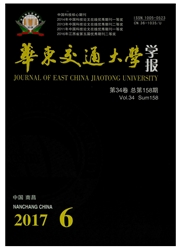

 中文摘要:
中文摘要:
根据中国经济转型和城乡二元结构背景,设定协整向量和调节参数都为非线性的阈值协整模型,以此揭示中国城乡经济一体化对城乡收入差距的非线性效应。主要结论为:中国城乡经济一体化对城乡收入差距的长期效应随着经济发展阶段的变化(经济转型)而产生非线性转换,转换时机为人均GDP 7 100元,也就是说,改革初期城乡经济的持续分割推动了城乡收入差距的扩大,现阶段城乡经济一体化的推进显著阻滞了当前城乡收入差距的扩大,且这种阻滞效应具有长期性。长期阻滞效应促进了短期城乡经济趋向一体化并对城乡收入差距的扩大产生短期抑制效应。上述结论意味着,当前城乡经济一体化的推进是从根本上改善中国城乡收入差距扩大的主要措施之一。
 英文摘要:
英文摘要:
Based on the background of dual structure and economic restructuring of urban-rural areas, this papersets up the threshold cointegration model with cointegration vector and adjustment parameter which are nonlinearto reveal the nonlinear effects of urban-rural integration on urban-rural income disparity. Results show that thereis a nonlinear cointegartion relationship between urban-rural income disparity and urban-rural integration de-pending on the economic stage, and the switch opportunity is at the 7 100 yuan per capita GDP. The nonlinearcointegration implies that the urban-rural segmentation promotes urban- rural income disparity at the beginningof Chinese reform, while blocking the urban-rural integration block urban-rural income disparity at present. Fur-thermore, the long- run nonlinear cointegartion relationship promotes the integration of short- run urban- ruraleconomy and inhibits the expansion of short-term urban-rural income disparity. Those results show that urban-ru-ral integration is one of the most important measures of blocking the widening of income disparity of urban-ruralareas in China.
 同期刊论文项目
同期刊论文项目
 同项目期刊论文
同项目期刊论文
 期刊信息
期刊信息
